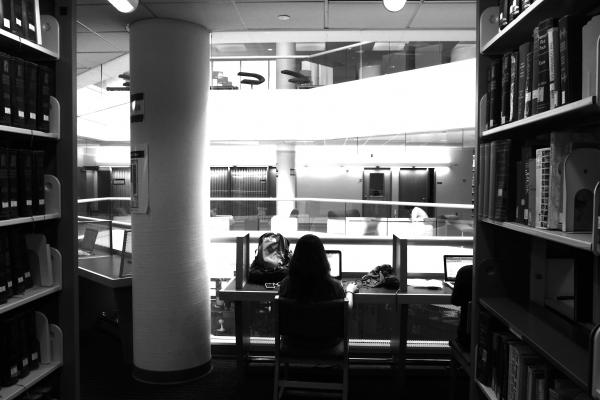The Foundation of the Drexel Institute of Art, Science, and Industry
Part of
Anthony J. Drexel created the Drexel Institute of Art, Science, and Industry—the 1891 forefather of Drexel University—with the goal of providing working-class students with a balanced education and path of upward mobility.
The Drexel Institute of Art, Science, and Industry, founded in 1891, was the brainchild of the Industrial Age financier and philanthropist Anthony J. Drexel. Drexel aimed to provide a practical education and a means of upward mobility for sons and daughters of the urban working class. Drexel donated $2 million as the fledgling Institute’s original endowment and funded the construction of a building to house the Institute—prosaically named Main Building. A Beaux Arts-style edifice architected by Wilson Brothers, Main Building was the Institute’s entire campus. Its ornamental features conveyed the Institute’s founder Anthony Drexel’s vision of working-class uplift through vocational education and exposure to high culture.
The Industrial Age financier, civic leader, and philanthropist Anthony J. Drexel (1844–1893) provided the construction funds and a $2 million endowment to establish the Drexel Institute of Art, Science, and Industry, which opened in the newly constructed Main Building in 1891. Drexel created his namesake institute to provide a practical education and a means of upward mobility for sons and daughters of the urban working class.[1]
Drexel envisioned an education that would balance what Benjamin Franklin called “practical” and “ornamental” learning. Specialized vocational training would be accompanied by students’ exposure to the city’s “high culture” in the form of concerts and visits to the Free Library. An article that appeared in Harper’s Weekly shortly after the Drexel Institute’s opening aptly summarized Anthony’s motives for this approach:
Its curriculum is such that when a young man or young woman goes forth from its doors with its diploma in hand, he or she may find a situation open and waiting. It will afford training—and that is practical education—to the masses, who have undoubted ability, but no possibility of attaining development under present scholastic conditions. The Drexel Institute starts upon a course of broad philanthropy, of which no man can consider the possible bounds.[2]
Mindful of his father’s immigrant roots and influenced by his niece Katherine (St. Katherine Drexel, 1858–1955), Drexel wished to open economic opportunities for Philadelphia’s ethnic working class. His models, as the historian Richardson Dilworth notes, were “New York’s Cooper Union for the Advancement of Science and Art (established in 1859), the Pratt Institute (established in 1887), and Philadelphia’s own Pennsylvania Museum and School of Industrial Art (founded in 1876, the museum later became the Philadelphia Museum of Art and the school became the University of the Arts).”[3]
Andrew Carnegie, Thomas Edison, and J. Pierpont Morgan, were among the many luminaries who attended the Drexel Institute’s dedication ceremony on December 17, 1891. Averse to the limelight, Anthony Drexel was not present to hear the accolades of the many dignitaries who gathered in Main Building, a splendid 500,000 square-foot, four-story edifice designed by Joseph and John Wilson (Wilson Brothers architects).
Atypical of the architecture of its era, Main Building was neither Victorian nor Gothic in style. Instead it was reminiscent of the Beaux Arts Memorial Hall of the 1876 Centennial Exposition.[4] The design reflected Anthony Drexel’s vision of an education balancing practical and ornamental elements. The architectural historian Amy E. Slaton says, “The appearance of Drexel’s first building declared at top volume that industrial learning and labor and the transmission of Western high culture were inseparable undertakings.” The Main Building’s decorative flourishes “conveyed the cultural educability of those inside.”[5] The exterior paid tribute to “the lofty and esoteric intellectual achievements of past epochs,” with terra-cotta representations of transformative Western intellectuals like Goethe, Humboldt, [and] Bach. “The eleven portrait medallions. . . arrayed in an archway surmounted by a winged nude female figure representing ‘the Genius of Knowledge,’” writes Slaton, “were the building’s most fully rendered exterior structures, but reliefs made up of floral and geometric motifs decorated much of the outside surface.”[6]



